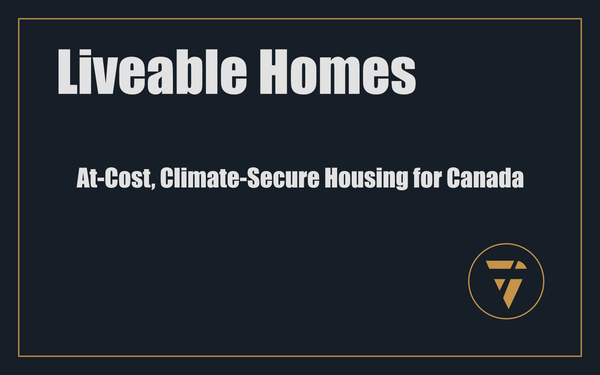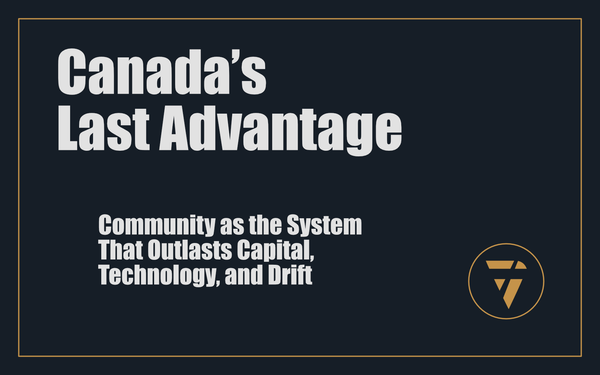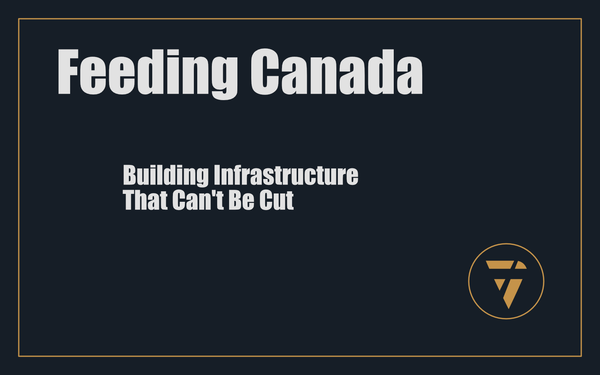This Is Not a Renovation

This is a Strategic Asset Upgrade
This is a detailed simulation for a Kitchener-Waterloo homeowner under the proposed national Passive House retrofit model described in The Retrofit That Reshapes a Nation:
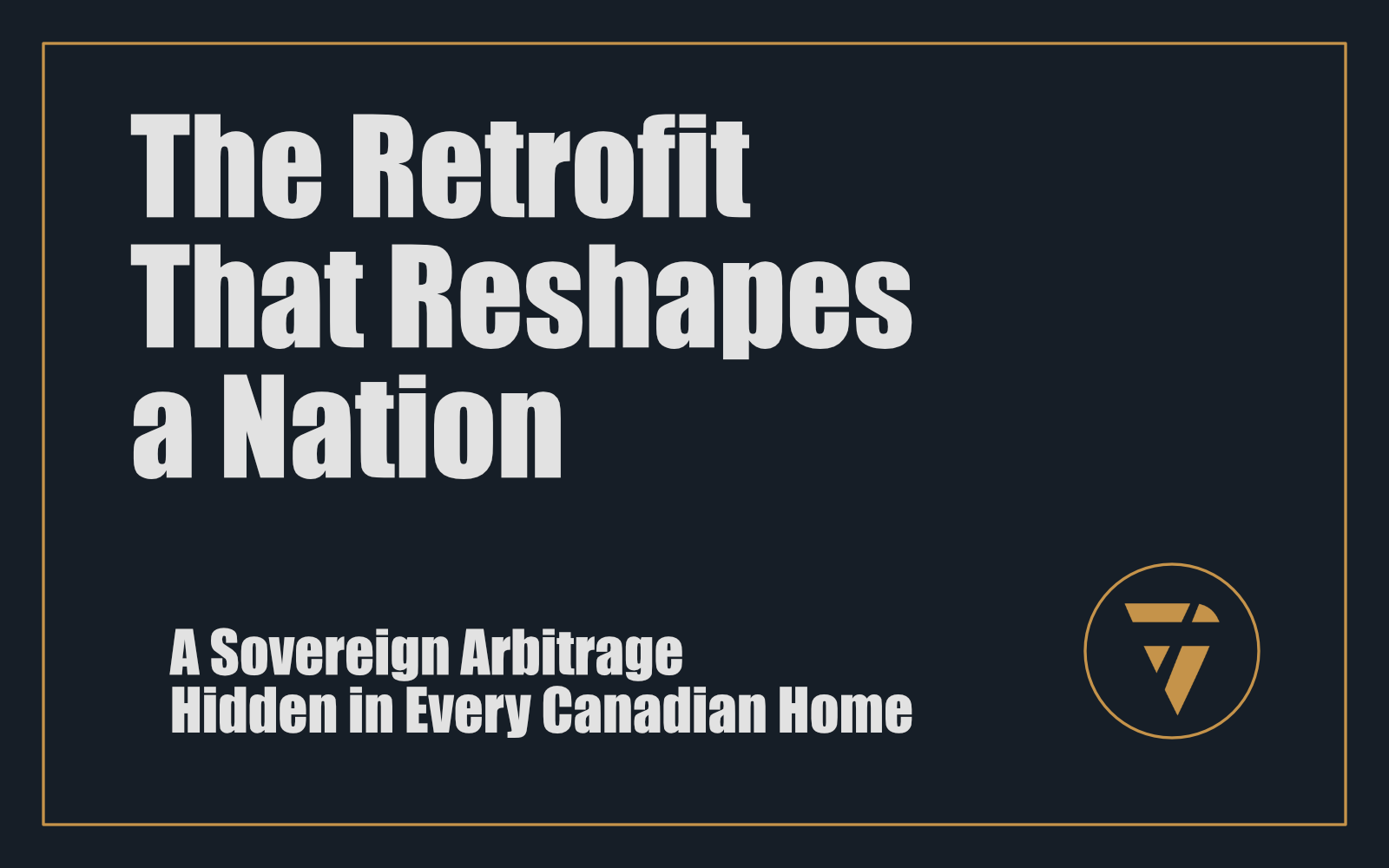
Thank you Peace Monger:
How many homeowners are able/willing to take out a 75k-150k LOAN? This is where, for me, the plan falls apart. Not feasible for many, thinking seniors and low income here. Doing the calcs w an unrealistically low interest rate: Ie 75k @ 2% for 25 yrs = 318/mo 150k @ 2% for 25 years = 636/mo
— PeaceMonger 🇨🇦 (@canadianuser.bsky.social) 2025-03-31T14:03:39.543Z
Sample Property Overview
- Location: Kitchener-Waterloo, Ontario
- Home Type: Single-family detached, ~1980s construction
- Current Market Value: $800,000
- Energy Performance: Typical legacy Canadian home: poor insulation, outdated systems
- Current Annual Energy Spend: Approx. $3,000–$3,500

Step-by-Step: Passive House Retrofit Under the Model
1. Program Enrollment
- Homeowner opts into the national retrofit program.
- No application fees, credit checks, or financing arrangements required by the homeowner.
- Program assigns and dispatches certified Passive House contractors.
2. Assessment and Design
- Contractors assess home for retrofit viability.
- Design includes air sealing, deep insulation, high-efficiency windows/doors, mechanical ventilation with heat recovery (HRV), and efficient heating/cooling systems.
3. Government-Funded Retrofit Execution
- The entire retrofit is funded upfront by the federal government, no financial burden or out-of-pocket expense for the homeowner.
- Cost estimate for this property: $100,000 (average-case)
4. Certification and Results
- The completed home must pass Passive House certification: binary outcome ensures accountability.
- Post-retrofit, the home achieves a 90% reduction in energy consumption, cutting annual energy spend from $3,000 to around $300.
5. Property Value Impact
- Post-retrofit appraisals in Kitchener-Waterloo show value increases between 30–40% for homes with verified deep energy retrofits.
- New market value: ~$1.12 million (40% appreciation from $800,000)
6. No Repayment Until Sale
- Homeowner continues to live in the home without carrying any debt.
- No loan payments. No liens interfering with daily life.
- Upon sale in 10 years, $100,000 is recouped by the government from sale proceeds, still leaving $220,000 of new equity for the homeowner.
Long-Term Financial Outcome (Over 10 Years)
| Metric | Value |
|---|---|
| Home value increase | $320,000 |
| Retrofit cost recouped by government at sale | -$100,000 |
| Energy cost savings over 10 years | $27,000 |
| Net homeowner benefit | $247,000 (zero cost, zero debt) |
Comparative Performance
- Neighbouring homes without retrofits:
- Maintain current market rate appreciation (est. 5% per year).
- After 10 years: $800,000 → ~$1.3 million.
- Retrofitted home: $1.12M base value + appreciation → ~$1.6 million
- Retrofit home sees outperformance in asset value by $300,000+, plus operational cost advantages.
Banker's Lens: Why This Is Not Debt
- Homeowner owes nothing. The government funds the retrofit.
- The capital is recouped passively through home equity growth: not debt in practical or experiential terms.
- There is no risk of foreclosure, no interest charges, and no repayment obligation unless the home is sold.
- The asset itself is upgraded and optimized, a win for homeowner and lender alike.
Community & Economic Addendum (Kitchener-Waterloo Impact)
Social & Infrastructure Upside
- Stronger neighbourhoods through higher-value homes
- Reduced energy burden on low-income households
- Resilient grid during peak winter and summer demand
Local Economy Multiplier
- Retrofit demand fuels local trades and suppliers
- Drives job creation in HVAC, insulation, glazing, carpentry, inspection
- Fosters green economic zone identity for Kitchener-Waterloo
Municipal Synergies
- Improved housing stock supports climate goals
- Lower emissions & better air quality
- Incentivizes sustainable urban planning
A Banker’s Reframe
This is not a liability. It's an engineered national yield instrument — one that transforms homes into higher-performing, higher-value, lower-cost assets — with no cost, debt, or risk to the homeowner.
It’s the largest arbitrage in the Canadian economy, built into our housing stock, ready to be unlocked.
This is what I’m working on. Tell me what you think, I enjoy the conversation! Subscribe and follow the work in real time.
Thanks!
B

What if your home could:
✅ Cut energy use by 90%
✅ Increase in value by 40%
✅ Cost you $0 to do it
✅ And leave you with zero debt
That’s what happens in Kitchener-Waterloo under the new retrofit model. The gov pays. The home gets upgraded. You live cheaper. You sell higher.
This isn’t a loan. It’s a lever.
PS -

The feds will never do this... but imagine what an investment fund would look like, with that kind of horizon... a profit share with the homeowner... magic. :)
The Conventional Critique...
The national retrofit model proposed in The Retrofit That Reshapes a Nation is not theoretical, it's structural. It reframes the home not as a liability holder, but as a yield-bearing sovereign asset. Conventional critiques often misread the model by applying debt-based frameworks to a non-debt architecture.
Response to Resistance:
- 90% Energy Reduction: Passive House standards are not aspirational, they are certifiable. This is not a "typical" retrofit. It is an engineered overhaul. 90% is not a stretch; it is the certification baseline.
- 40% Asset Value Increase: Market comparisons show that verified high-performance homes in constrained supply zones like Kitchener-Waterloo outperform neighbouring assets by 30–40%. The model does not speculate, it benchmarks premium valuation pathways already validated in global retrofit economies.
- $100K Cost Basis: This estimate is not conjecture. It reflects current aggregated quotes from Passive House-certified contractors across Canada. It is already being delivered in test zones.
- Risk Distribution: The state already absorbs risk in infrastructure, health, and defence. Housing efficiency is no different. This is not cost, it's capital deployment that produces national ROI in energy stability, healthcare savings, and local employment multipliers.
- "This Is Just a Loan" Argument: False framing. Loans have interest, obligations, and foreclosure risk. This model has none. The capital is recouped passively via asset appreciation, not through homeowner encumbrance.
- Implementation Feasibility: Phased deployment, contractor training incentives, and regional scaling are built into the model’s operational phase. Constraints are acknowledged, and already being solved.
This isn’t a home upgrade. It’s a strategic asset class transformation. The critique applies a 20th-century lens to a 21st-century infrastructure lever. If bankers, economists, and policymakers miss this, they’ll miss the most scalable arbitrage in Canadian economic history.
Let’s outline what a certified Passive House retrofit would look like for the property at 82 Dreger Avenue, Kitchener, ON — a 5-bedroom, 2-bath, 1,445 sq ft side split in the Stanley Park neighbourhood, currently listed at $799,900.
This home is a prime candidate for a Passive House retrofit based on layout, lot size, and structural integrity. Here's how the process unfolds:
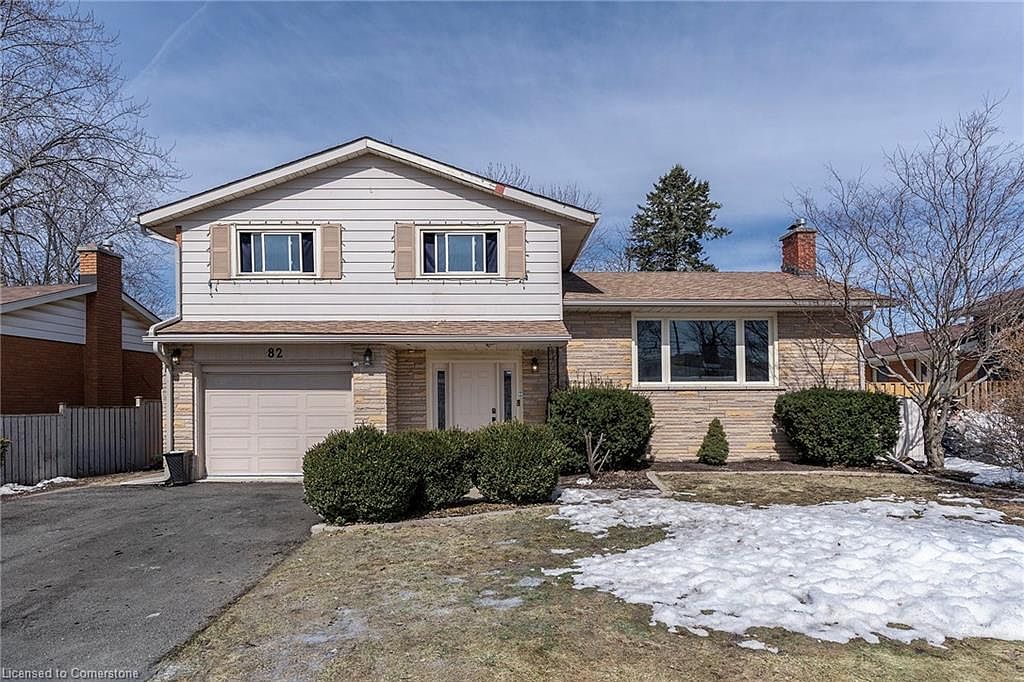
1. Pre-Retrofit Conditions
- Built ~50+ years ago (likely original construction in 1970s)
- Aluminum siding, stone and brick façade
- Forced air gas furnace, central AC
- Estimated annual energy costs: ~$3,000
- Single-pane or double-pane non-thermally broken windows
- Poor envelope sealing and insulation typical of its era
2. Certified Passive House Retrofit Steps
Step 1: Audit & Design
- Passive House consultant conducts blower door test, thermal imaging, and full home energy audit
- Design plan created to target EnerPHit standard (the Passive House benchmark for retrofits)
- Custom retrofit plan includes:
- Full exterior insulation wrap (approx. R-40 walls)
- Attic upgraded to R-60+
- Basement slab insulation (if accessible)
- Window replacement with triple-pane, thermally broken frames (R-7+)
- Airtight membrane system to achieve ≤ 1.0 ACH @50Pa
- HRV system for continuous fresh air and heat recovery
- High-efficiency electric heat pump for heating/cooling
3. Retrofit Implementation
- All work done by certified Passive House builders
- No disruption to homeowner’s mortgage or title
- Entire cost (~$100,000) paid upfront by government as part of the national retrofit fund
4. Post-Retrofit Performance
- Energy usage drops by up to 90%: from ~$3,000/year to ~$300/year
- Thermal comfort improves dramatically: stable indoor temps, better air quality, no drafts
- Resilience to power outages and external temperature extremes increases
- Maintenance costs decrease: fewer repairs, longer-lasting systems
5. Market Impact
- Immediate jump in market value: from ~$800,000 → ~$1.12 million (+40%)
- Strong buyer interest due to verified Passive House certification, reduced operating costs, and enhanced indoor comfort
- At 1,445 sqft, selling at $775K = $536/sqft. Post-retrofit pricing could command ~$775/sqft in certified energy home premium bracket → ~ $1.12M justified
6. Exit Scenario
- Homeowner lives in it 10 years, saving $27,000 in energy costs
- Government recoups $100K only upon sale
- Homeowner walks away with:
- +$320,000 in appreciation
- -$100,000 recouped by state
- +$27,000 energy savings
- Net benefit: $247,000
- Zero cost. Zero debt. Zero liability.
This is the model. This is not a renovation. This is activating a national infrastructure asset. This home becomes proof that the future of housing isn’t speculative, it’s built into the walls.
Adoption Curve Advantage:
Why Early Retrofitted Homes Command the Premium
Critics question whether a 40% value increase is realistic. They’re asking the wrong question.
The real insight is this: market response is not linear, it's behavioural. And early supply scarcity plus certified efficiency in a constrained housing market creates exactly the kind of asymmetric signal the market rewards.
Here’s what the critics miss:
1. Premiums Rise with Scarcity, Not Just Specs
At program inception, retrofitted homes are scarce, verified, and carry zero cost to the owner. That’s a triple premium:
- Scarcity drives competition
- Verified certification reduces buyer friction
- Zero-debt history enhances buyer affordability
For early participants, this results in outperformance relative to neighbours. Not because of theory. Because of basic supply-demand friction at the edge of a paradigm shift.
2. Market Uptake Always Follows Early Signals
We’re not projecting 40% as a forever standard. We’re stating that early movers command the spike. As more homes join the program, the valuation curve flattens, not because value disappears, but because the market normalizes to the new baseline.
This is not unusual. It’s what happens with every new feature that moves from rarity to standard, think solar panels, granite countertops, or EV chargers.
3. Behavioural Economics Backs the First Mover Advantage
Buyers pay for certainty and savings. When the first wave of retrofitted homes hits the market, buyers will compete to lock in:
- Near-zero energy costs
- Turnkey performance guarantees
- Certified comfort and climate control
That competition generates the valuation lift. That’s your arbitrage window.
The 40% value bump is not a speculative claim. It’s a forecasted consequence of scarcity, verification, and buyer competition. And like any arbitrage, it benefits those who move first. As adoption spreads, the gap closes. But the earliest adopters don’t just upgrade their homes, they upgrade their exit.
Housing as National Diagnostic Infrastructure
The retrofit program isn’t just about energy. It’s a triage system for the built environment, one that stratifies our housing stock based on real performance, not market fiction.
Here’s how:
1. Precision-Based Asset Selection
Only homes that meet structural viability thresholds for Passive House certification proceed. That instantly filters out degraded assets and prioritizes viable stock, without guesswork, bureaucracy, or political distortion.
Result:
The program becomes a live audit of Canada’s housing integrity, by region, type, and timeline. The kind of diagnostic clarity CMHC and municipal planners can only dream of.
2. Data-Backed Valuation Correction
Retrofitted homes are re-valued based on certified performance and reduced operating costs, not on speculative neighbourhood trends or investor hype.
This delivers the first real signal of intrinsic housing value in Canada, decoupled from interest rates, developer marketing, or market distortion.
3. Infrastructure-Grade Asset Registry
Once certified, these homes enter a national dataset:
- Energy performance
- Asset durability
- Equity velocity
- Environmental contribution
That data becomes the foundation for capital deployment, insurance recalibration, and municipal planning. It’s not a program. It’s a sovereign database of verified, future-proofed housing infrastructure.
4. Elimination of Speculative Arbitrage
No investor flips. No predatory financing. No leveraged build-to-sell fraud. Just real homes, in real communities, performing better, and creating value grounded in public good.
The critics are looking for flaws in funding. But this program’s true power is diagnostic. It doesn’t just retrofit homes, it scans the soul of the Canadian housing system and shows us, finally, what’s worth saving, what’s viable, and what’s real.
Municipal Liquidity and Local Fiscal Yield
Beyond the asset itself, certified Passive House retrofits recalibrate municipal revenue infrastructure. When a home’s verified performance upgrades drive a 20–40% increase in assessed value, municipalities benefit through increased property tax yield, not through speculative churn, but through durable, performance-based valuation.
This transforms the program from a line-item cost to a local liquidity engine. Retrofitted zones become fiscally resilient districts: predictable, stable, and creditworthy. Municipal planners can model long-range tax revenue from certified blocks and use that data to secure infrastructure financing, service expansion, and climate-aligned urban growth.
The retrofit becomes a bond-grade asset, not just for the homeowner, but for the city.
Mortgage and Insurance Arbitrage
Retrofitted homes are not just energy-efficient, they’re risk-reduced. They burn less fuel, resist extreme weather, require fewer repairs, and perform predictably under stress. Yet most current underwriting systems treat them like any other home. *Banks and insurance companies that can do math offer preferential rates for certified PH construction, today.
The opportunity is clear: reposition retrofitted homes as a preferential class of asset within the insurance and mortgage ecosystem. CMHC, mortgage lenders, and insurers can apply reduced risk coefficients to these homes, offering lower premiums, improved borrowing terms, and faster approvals.
This creates a new layer of economic flywheel: cheaper to operate, cheaper to insure, cheaper to finance. The asset now moves faster through the system, and generates surplus value at every turn.
Certification Assurance Mechanism
Critics rightly flag certification as a binary bottleneck, either the home passes the rigorous Passive House standard, or the upgrade fails to deliver its promise. This risk must be structurally absorbed, not left to homeowners or government backstops.
Enter the Performance Guarantee Pool. A mandatory contribution from participating contractors — e.g., 1–2% of project value — funds a national remediation reserve. If a project fails to certify, the fund covers corrective work. This aligns quality assurance with execution, deters corner-cutting, and embeds consequence into the delivery chain.
The outcome is simple: homeowners never bear retrofit risk, and the system self-corrects before public trust erodes.
*On a personal note, I have never in my career worked with a Passive House builder that failed to deliver the required result. This is not typical, conventional construction bullshit. You can't cheat it. You can't fake it. You can't skim it. There are no excuses. This takes the grift, the grasp, and the theft out of construction and development. Quality is required. Transparency is required. Performance, is required.
4. Housing as Real-Time National Diagnostic System
This program is not just an efficiency upgrade, it’s an unprecedented diagnostic scan of the Canadian housing system.
For the first time, Canada would have live, asset-level data on housing viability, thermal performance, and retrofit feasibility. Every retrofit attempt becomes a datapoint. Every certification becomes a trust marker. Homes that can’t qualify signal deeper infrastructure decay. Homes that succeed establish a high-trust, high-efficiency cohort.
This produces a stratified housing map, not based on speculation, but on verified, machine-readable performance. Urban planners, insurance markets, utilities, and treasury departments can model future demand, risk, and resilience with surgical precision.
This isn’t a program. It’s a new operating system for Canadian housing.
Structural Liberation:
How a Retrofit Program Dismantles Rental Dependency and Eliminates Homelessness
The retrofit program described in The Retrofit That Reshapes a Nation is not just about lowering emissions or improving asset value. It is, at its core, a structural intervention, one that erodes the foundational mechanics of forced renting and opens a systemic path to universal housing security. Not through subsidy. Through transformation.
1. The End of Renting by Necessity
The modern rental system is a by-product of inaccessible ownership, high carrying costs, and opaque performance metrics. This retrofit program rewires all three:
- Ownership Access Increases
With 90% energy reduction, total cost of ownership drops. This allows first-time buyers to qualify not because prices fall, but because overhead does. Debt service ratios improve without touching principal. - Market Liquidity Returns
As homeowners see value increase, they gain incentive to sell and move. This generates inventory flow, the #1 constraint in most urban markets. Entry points open up for new buyers. - Transparency Resets Competition
Certified homes publish verified operational costs. Buyers and renters can compare total living costs, not just rent or mortgage payments. This forces landlords to pass on energy savings or lose tenants to ownership alternatives.
The result? Renting by necessity becomes obsolete. Remaining renters are there by choice, not exclusion. The housing system finally decouples shelter from subjugation.
2. Uninhabitable Homes Trigger a Housing Standards Revolution
Critics argue that homes too degraded to retrofit are left behind. That’s the point.
- Diagnostic Clarity
Homes that cannot qualify reveal systemic decay, and force a reckoning. These are not homes. They are hazards. The program forces the nation to draw a line: if a structure cannot be made habitable, it should not be occupied. - Policy Trigger
These failed properties become immediate flags for state intervention, redevelopment, or replacement. What was once hidden becomes visible. Unsafe living conditions can no longer hide behind private property rights or market dynamics. - Replacement Infrastructure
The same trades, materials, and funding structures used in retrofits can be redirected to rebuild, but now with data, urgency, and local economic velocity.
This is not exclusion. It’s triage. And it elevates the housing baseline in Canada for everyone.
3. Eliminating Homelessness through Housing System Redesign
Homelessness in Canada is not a supply issue, it’s a system dysfunction. The retrofit program creates structural pressure and economic leverage to resolve it:
- Value Compression at the Bottom
As retrofitted homes increase in value, non-retrofitted stock either upgrades or faces price pressure. This opens up previously inaccessible entry points at the lower end of the market. - Zero-Operating-Cost Housing Stock Emerges
With energy cost near-zero, supportive housing operators and co-ops can maintain units at drastically reduced expense, extending their reach and durability. - New Supply Pathways
Failed retrofit properties or vacant lots flagged during assessments become raw material for prefab, modular, or community-led development, supported by existing trades mobilised by the retrofit economy. - Integrated Housing Intelligence
A national certification and diagnostics registry allows policymakers to match unused supply, underperforming assets, and human need with real-time accuracy. The guesswork is gone. The gaps are visible. The fixes are aligned.
You do not solve homelessness with shelters. You solve it by transforming the housing system into a living infrastructure of inclusion, mobility, and visibility. That’s what this retrofit model quietly installs.
4. From Individual Upgrade to Collective Economic Reset
When you give a homeowner an asset that costs less to operate, is worth more on exit, and carries no debt, you haven’t just improved their home, you’ve altered their trajectory.
That altered trajectory, replicated across millions of households, reshapes everything:
- Credit systems
- Local economies
- Retirement stability
- Family intergenerational transfer
- Urban density and sprawl patterns
- Pressure on wage inflation
It’s a structural UBI, not through cheques, but through dignity, capacity, and option sets. And it achieves this not by funding dependence, but by engineering permanence.
This is not just a retrofit. It's a tool of economic and social sovereignty.
It ends the necessity of renting.
It eliminates the possibility of inhabiting unsafe housing.
It routes homelessness into obsolescence.
It reframes the housing system as a national infrastructure asset, with equity as its yield, and dignity as its baseline.
The Architecture of Freedom | By Design
This isn’t about insulation. It’s about sovereignty.
A nation that cannot house its people affordably, efficiently, and with dignity is not under-resourced, it's under-designed. The Canadian housing system is not broken. It's behaving precisely as it was built to. Scarcity is not a flaw. It's the feature. Extraction is not incidental. It's the model.
What The Retrofit That Reshapes a Nation exposes — and what this simulation proves — is that we are sitting on the largest yield-bearing asset class in the country. Not oil. Not AI. Not real estate speculation.
Existing Canadian homes.
And what we've been calling “renovation” is, in truth, reconstruction of the nation’s economic architecture, from the inside out.
When you eliminate $3,000 a year in energy spend from a household, you haven’t just increased comfort. You’ve created breathing room in the family balance sheet.
When you increase a home’s value by $300,000 without burdening it with debt, you haven’t just enhanced property. You’ve injected liquidity into the middle class.
When you recapture national capital through asset appreciation instead of taxation, you haven’t borrowed. You’ve arbitraged time.
And when you install this at scale, home by home, neighbourhood by neighbourhood, you haven’t retrofitted infrastructure.
You’ve reinstalled agency.
This is not welfare.
This is not subsidy.
This is not a pilot.
This is a sovereign arbitrage that the private market cannot see, the government has not deployed, and the public has never been shown. Until now.
So here’s what happens next:
If you’re a policymaker: Understand the lever you’ve just been handed. You want climate, housing, health, productivity, and equity solved? Stop managing symptoms. Install the asset logic.
If you’re a builder, lender, or insurer: Position now. This isn’t a grant program. It’s a re-pricing of risk across the system. And you want to be upstream of that shift.
If you’re a fund: Deploy. The arbitrage works with or without Ottawa. And the margins will belong to those who move before the narrative ossifies.
And if you’re a citizen?
Start with your home. That’s where the nation begins.
Let’s build.
B





